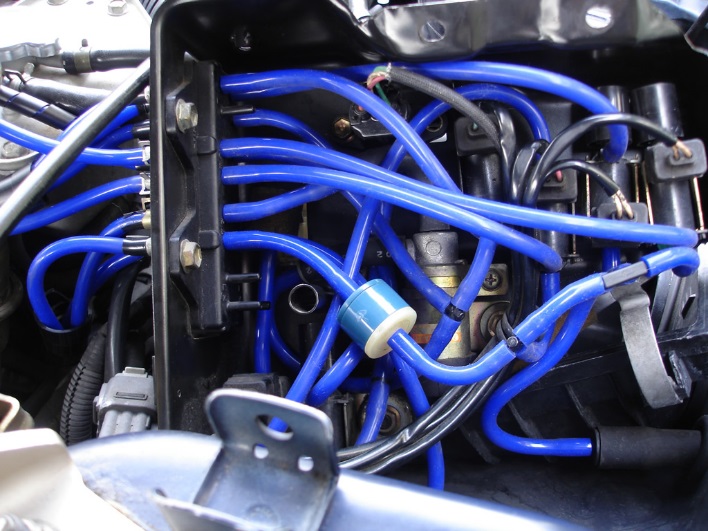Engine Vacuum Leaks 101

It’s an odd problem but cars that are powered by internal combustion engines can develop an issue called a “vacuum leak.” It’s a situation where a hose or engine gasket fails and outside air gets pulled into the engine while its running. This doesn’t sound very harmful (and it’s not really) but it can make an engine run roughly and can affect your gas mileage. Sometimes you can hear a vacuum leak “hissing” when you have a vacuum leak but most of the time it will cause the computer in your car to turn on the Check Engine Light (CEL). In general, fixing a vacuum leak is something that you leave to your mechanic but they are worth learning about. You never know when a mechanic is going to say to you, “you’ve got a vacuum leak that I have to find” and when that happens you can nod your head knowing more than a little about what he/she is referring to.
Exactly where is this vacuum?
Vacuum is generated when an internal combustion engine is running. Internal combustion engines suck in atmospheric air to ignite (along with gasoline) in the engine cylinders. It is during the first part of this process (the sucking air in part) where a vacuum is created.
Long ago, engineers knew that having a source of vacuum in a car was useful. You can use it to activate things (such as heating systems), to power things (such as power brakes), and to monitor engine conditions (such as air/fuel ratios). It’s a pretty useful power source that is commonly used.
But problems occur when the vacuum of an engine is disturbed by leak. This can happen when gaskets fail, plastic parts break, or when vacuum hoses get old and cracked. At Kims Chrysler of Laurel, a local Chrysler, Dodge, Jeep, Ram dealer in Laurel, MS, they say sometimes it happens when someone simply dislodges a hose when repairing another issue under the hood.
The symptoms
Vacuum leaks can cause a myriad of problems with cars and trucks. To start with, you may have engine problems that are immediately obvious; things like hard starting, misfiring, rough idle and stalling are all possible symptoms when you have a vacuum leak. You may also have less obvious problems such as poor fuel economy or poor acceleration. As we mentioned above, often the CEL comes on. Although it is rare, if the vacuum hose was damaged or unplugged on your vacuum brake booster, you may even find that your brakes don’t work very well.
DIY
In most cases, it is best to have a mechanic troubleshoot a vacuum leak but if you want to take a crack at it. Here’s a few tips:
First, open the hood and look at all the vacuum hoses routed around. If you have an older car, you may find one that has slipped off its coupling or has cracked. Underneath the hoods of most cars today is a plastic sticker that has a diagram of the emissions control system. It will show where all the emission hoses are routed. This is a good map to follow when looking for problems with vacuum hoses because emission hoses are often at fault.
The next thing to do is start your engine and listen. Although engines aren’t exactly quiet under the hood, sometimes you can hear a vacuum leak because it emits a distinct hissing sound. This is usually one the first things a mechanic will do when they suspect an engine leak.
Get a Professional
If those simple procedures don’t work, honestly, it’s time to have a professional mechanic look at things. Not only do they have years of experience troubleshooting this sort of thing, they have specialized tools to help them. They also have car lifts that are really handy when you are fixing this sort of thing.




